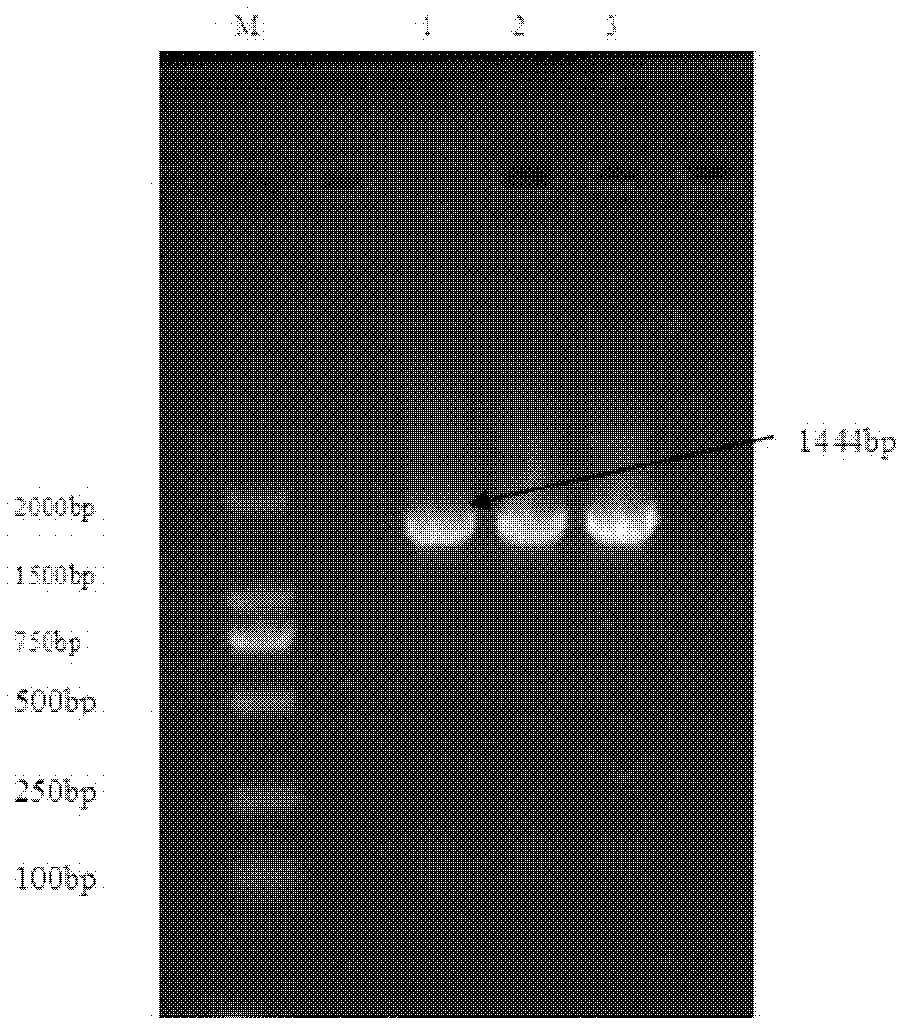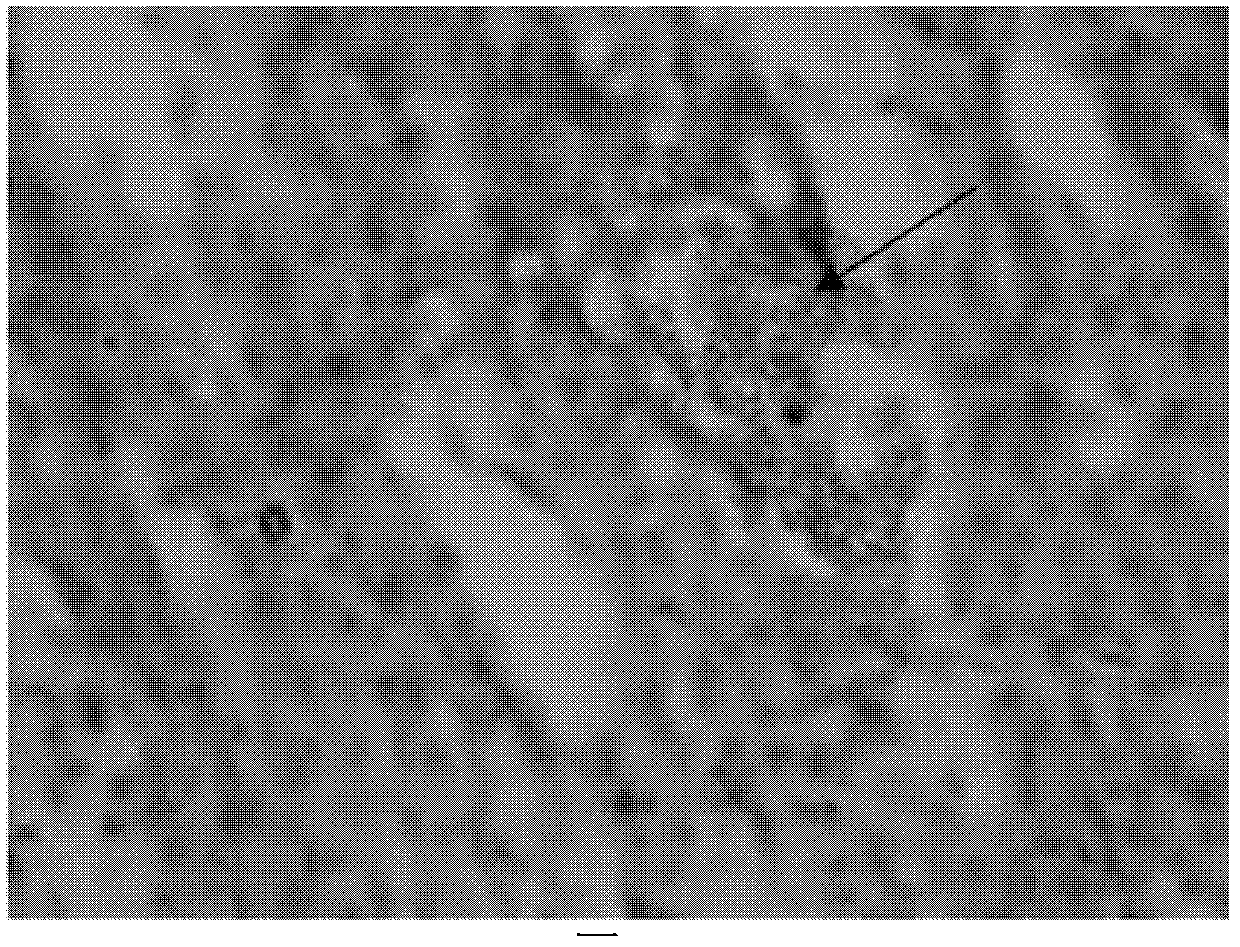Oxalic acid degrading bacterium NJODL1 and application thereof
A technology for degrading bacteria and oxalic acid, applied in the biological field to achieve the effects of reducing the concentration of oxalic acid in urine, excellent acid resistance and bile salt resistance, and good colonization ability
- Summary
- Abstract
- Description
- Claims
- Application Information
AI Technical Summary
Problems solved by technology
Method used
Image
Examples
Embodiment 1
[0040] Example 1: Isolation and identification of Lactococcus lactis lactic acid subspecies
[0041] 1. Preparation of culture medium
[0042] The formula of MRS liquid medium is: 1L distilled water contains: peptone 10g, yeast extract 5g, glucose 20g, beef extract 10g, sodium acetate 5g, triammonium citrate 2g, Tween 801mL, MgSO 4 ·7H 2 O0.58g, MnSO 4 4H 2 O0.05g, K 2 HPO 4 2g, adjusted to pH = 6.2-6.4; sterilized by high-pressure steam at 121°C for 15 minutes, and set aside.
[0043] 2. Sample source
[0044] Three breeds of dogs that are not prone to canine urolithiasis were selected in a certain dog farm. There were eight dogs of each breed, half male and half female. All dogs were fed with commercial dog food (FOSS dog food, Nanjing Police Dog Research Institute Science and Technology Development Center Animal Food Factory). None of the selected dogs had a history of changing dog food, had not used antibiotics within three months, and had not experienced diarrhea....
Embodiment 2
[0059] Embodiment 2: the expanded culture of the isolated bacterial strain NJODL1 of embodiment 1
[0060] The formula of the seed medium is, 1L of distilled water contains: peptone 10g, yeast extract 5g, glucose 20g, beef extract 10g, sodium acetate 5g, triammonium citrate 2g, Tween 801mL, MgSO 4 ·7H 2 O0.58g, MnSO 4 4H 2 O0.05g, K 2 HPO 4 2g, adjusted to pH = 6.2-6.4; sterilized by high-pressure steam at 121°C for 15 minutes, and set aside.
[0061] The bacterial strain NJODL1 obtained in Example 1 was inoculated in a 250mL Erlenmeyer flask equipped with 50mL seed medium, and cultivated for 24h at a temperature of 37°C to obtain a liquid culture of bacterial strain NJODL1, and the number of cells was 3.2×10 9 CFU / mL.
Embodiment 3
[0062] Embodiment 3: Utilize bacterial strain NJODL1 to ferment and degrade oxalic acid in the MRS fermentation medium containing 20mmol / L oxalic acid
[0063] The formula of oxalic acid MRS fermentation medium is: 1L distilled water contains: peptone 10g, yeast extract 5g, glucose 20g, beef extract 10g, sodium acetate 5g, triammonium citrate 2g, Tween 801mL, MgSO 4 ·7H 2 O0.58g, MnSO 4 4H 2 O0.05g, K 2 HPO 4 2g, 2.68g sodium oxalate, adjust pH=6.2-6.4; sterilize by high-pressure steam at 121°C for 15min.
[0064] The NJODL1 liquid culture obtained in Example 2 was centrifuged at 12,000 r / min for 15 minutes, the supernatant was discarded, the bacterial precipitate was collected, and washed 3 times with sterile physiological saline. Then it was inoculated into a 250mL Erlenmeyer flask equipped with 100mL oxalic acid fermentation medium at a volume ratio of 2%, and used as a blank control (with oxalic acid but without bacteria). Bacteria were done in triplicate. Cultivate...
PUM
 Login to View More
Login to View More Abstract
Description
Claims
Application Information
 Login to View More
Login to View More - R&D
- Intellectual Property
- Life Sciences
- Materials
- Tech Scout
- Unparalleled Data Quality
- Higher Quality Content
- 60% Fewer Hallucinations
Browse by: Latest US Patents, China's latest patents, Technical Efficacy Thesaurus, Application Domain, Technology Topic, Popular Technical Reports.
© 2025 PatSnap. All rights reserved.Legal|Privacy policy|Modern Slavery Act Transparency Statement|Sitemap|About US| Contact US: help@patsnap.com



